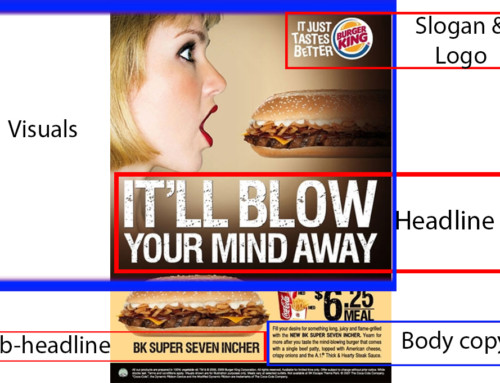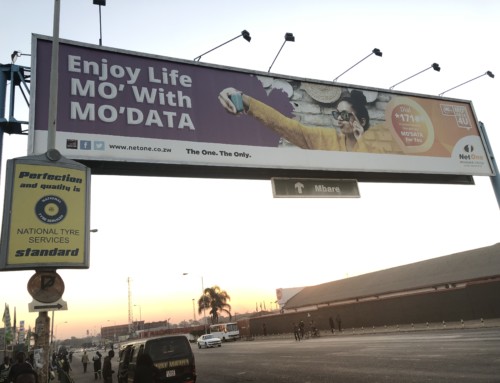Hey guys! I hope you are well for I am great. The last time out we talked about how you should write a mission statement for your strategic plan. We showed how this is critical as you can demotivate your employees by writing a mission statement which is not on point. This week we will look at how you should define your strategic direction when you are writing your strategic plan and the pitfalls that you may encounter if you do not define your strategic direction in the right way. The main pitfalls of not defining your strategic direction in the correct way are losing market share to competitors that you did not know you had, failing to respond to changes to the market in time which could lead to the demise of your company and failing to realise opportunities that are in the market thus limiting yourself reducing the return on investment that you will get for yourself and for your stakeholders. These are not good situations to be in now are they? Let us see how some Zimbabwean companies end up in these unfavourable situations.
A Great White Shark has to keep moving or it will die because of a lack oxygen. In Zimbabwe we have a Great White Shark, Zimpost, which stopped moving, and now it is dying.
Ever wondered why some sharks always keep moving? Allow me to quote Livescience. ‘Some sharks, particularly those that are not active swimmers, such as nurse and bullhead sharks, breathe through buccal pumping. This method gets its name from the buccal (mouth) muscles that actively draw water into the mouth and over the gills, allowing the sharks to respire while remaining still. These sharks also have prominent spiracles, or respitory openings behind the eyes that allow the fist to pull in water while buried under the sand. Other sharks use ram ventilation; that is, they ventilate their gills by swimming very fast with their mouths open. Some sharks, such as the tiger shark, can switch between buccal pumping and ram ventilation depending on quickly they’re swimming.
“Obligate ram ventilators” are sharks that have lost the ability, and the necessary anatomy, for buccal pumping, and instead can only respire using ram ventilation. Sharks from this group (which includes great white, mako and whale sharks) would indeed die from lack of oxygen if they stopped swimming.’
This is true for businesses as well. A business should continue to move forward (for slightly different reasons than the sharks though) so that they can stay ahead of the competition. Failure to do so will lead to you being swallowed up and disappearing into the darkness. Zimpost is a Great White Shark and at its peak it chewed and swallowed up all of the competition that came in its path. It then stopped moving and now mail’s Great White Shark is dying. The reason why it stopped moving forward was because of the strategic direction it had taken in its strategic plan.
Zimpost failed to keep moving and this was largely a result of how it defined its business in its strategic plan. It defined itself along the lines of a product (mail) as opposed to defining itself based on a market (connecting people)
‘At a press briefing this week, Zimpost MD Douglas Zimbango revealed that in 2000 Zimpost was handling around 100 million mail pieces a year.
Fast forward to the present day. Zimbango says they are now handling just 14 million mail pieces a year. This is an alarming 86% reduction. He added that mail used to contribute 80% of the company’s revenue; it now only contributes just 20%, representing a 60% drop.’ (The Zimbabwe Independant, 2014)
Zimpost had probably defined its strategic direction based on a product, which are mail pieces. When technology set in Zimpost could not move fast enough as its structure would not allow that. By structure I am looking at factors like the equipment, the buildings e.g. post offices and the employees who were specialised for handling mail and nothing else. With the arrival of SMS, voice calls, email and WhatsApp among other communication methods Zimpost found itself becoming more and more irrelevant as an SMS can reach its destination way faster than the post man can ride his bike to your house. In its strategic plan Zimpost could have defined its strategic direction as a company that ‘connects people and businesses’ and then changed in line with that mantra. In the end you would have seen Zimpost moving towards connecting people using various technologies while there was still time.
Pitfall – The failure of your business in the long term as a result of the market’s needs changing in a way that does not favour your product. If Zimpost had defined its strategic direction, in its strategic plan, based on the market it would have anticipated and reacted to those changing needs while there was still time.
Let us look at another Zimbabwean company which was affected by not defining its strategic direction properly in its strategic plan.
“We Move the Nation’. This actually is the right definition of this type of business but if you take a closer look at the picture above you will realise the problem there. There are only trains in that picture, and trains are not the only mode of transport that people or businesses use.
The Product Definition of a Business
NRZ defined itself along the lines of a service that is provided through a product, the trains. This is the product based way of defining your business. These trains became old and obsolete and then the problems began. Products are transient, but markets endure forever. Do not focus on your product but rather focus on the market that it serves.
The Market Definition of a Business
‘We Move The Nation’. If this tag line had been put into practice you would have seen NRZ providing transport through various means like buses, trucks or small cars among various forms. If they had followed that path they would have probably re-branded as well. This would have allowed NRZ to identify the changing market needs in terms of forms of transport and then they would have changed with the times. NRZ would still been operating well if it had defined its business this way in its strategic plan. The trains might have been parked by now but the buses, vans etc. would still have been operating.
This again is another example of the pitfalls of not defining your business based on the market in your strategic plan. Is your business defined based on a market, or a product? Reflect and tell us your answer.
From what I have seen so far, I think ZLG rules the roost when it comes to bottled water in Zimbabwe. The question is, are they not limiting themselves by the way they seem to have defined their business?
I think ZLG is the biggest when it comes to bottled water in Zimbabwe. Do you agree? I checked with the Ministry of Health and Child Care, and below is a list of the companies selling bottled water in Zimbabwe.
Bottled water brands in Zimbabwe (Ministry of Health and Child Care). From this list which bottled water brand do you think is the king of the jungle?
Do you see any brand that is bigger than ZLG? I also used to wonder why some of these bottled waters like Krystal Purified Water do not taste so good. It’s because they are made from purified Harare municipal water, if the information in that image is anything to go by. Based on this information ZLG might be tempted to think that they are the market leader, but is that the case?
The Target Market Definition of a Business
If ZLG, in its strategic plan, defines its target market as ‘everyone who drinks bottled water’ with bottled water being a product, then its competition will be the companies that are listed in that image. In that case they will be done. They will be using the target market definition of defining their business. In my opinion they could be limiting themselves though, let me show you why I think that this is the case.
The Strategic Market Definition of a Business
If ZLG defined their market instead as ‘everyone who drinks something to quench their thirst’ which is a need, not a product or service, they could then find out that their direct competition are indeed those bottling companies that are on the list. In terms of indirect competition there would also be Delta Beverages, Dairibord and even the farmers that sell watermelons as these products can also quench one’s thirst. The type of competition will also change during different seasons for example in the summer ice cream will become their direct competition as a cooler and during the winter it would become indirect competition as people take it more for leisure. This approach would change the way that ZLG does business, completely. They could re-strategise and actually increase the return on their investment by dealing with the new found competition. They could also make moves to fortify their position in the market as a result of making the right moves to ensure that potential competition does not sneak up on them as it will be closely monitored.
Pitfall – Not properly defining your business will lead to you not properly defining your competition. When this happens you will turn a blind eye to entities who will be taking some of the revenue that you are supposed to receive reducing the return on your investment. More importantly not monitoring the competition that you will have failed to identify can lead to you losing out when indirect competition becomes direct competition, encroaches into your market space, and eats into your market share.
So guys, this is it. Do you see the problems that can arise if you do not define your business properly in your strategic plan? You should define your business correctly i.e. basing the definition on a market rather than a product or service. This way you will be able to anticipate the changes in the market better and be able to change your offerings in line with that instead of sticking to a product or service that can become obsolete. You will also be able to better define who your competition is by defining your market correctly and making the necessary moves to keep both direct and indirect competition at bay. Have you defined your business properly in your strategic plan? Let’s discuss.
Thanks
Ruvimbo








Thanks again for challenging us Ruvimbo.
Can I share some personal experience? I spent 7.5 years post-high school in the Post Office. That is what I can wincingly term ‘my lost decade.’ I am not surprised the Post Office has gone south. Those of us who were there, though much lower down the ranks, were always frustrated because there were no opportunities upwards. Promotion seemed to have been reserved for those who were not academically gifted. The ‘yes’ people. Those who ‘saw too much’ would always be bypassed even though they had passed the internal exam called the Departmental. Then to frustrate these long-serving & loyal workers further, the P.O. went on a mass- recruiting exercise (towards end of the ‘80s) where they sought university graduates with Business Management or similar qualifications for the post of Postal Business Manager (formerly Postmaster). They side-lined long-serving workers who had Business Studies from institutions like the Technical/Polytechnic colleges. I had just done half of my ND at that point in time (via evening classes) and my long-standing suspicions were confirmed. I was no longer relevant in the P.O! I resigned & went onto the full time Diploma in Construction Supervision (long term ambition) at the Bulawayo Poly. Within a year of my leaving college I had 2 promotions. I really began to understand the meaning & benefit of these upgrades. My 7.5 years at the P.O. had yielded a half promotion/upgrade if I really want to be fair! Yet 2.5 years after leaving college I became a substantive Site Manager. My former colleagues from the P.O. suddenly realised we were a world apart. When I walk past a P.O. today, I shudder to think of what my life would have been if I had not taken that risky move.
Incidentally, today (22nd Feb.) I reminded a friend that she once said, ‘We have to kiss a thousand frogs before we can have a chance to kiss our Prince.’ My lost decade was my thousand frogs. The P.O. never cared a half penny for its thousands of entry level employees. Thus it missed out on a succession strategy that could have groomed one such worker to later be its MD. Such workers would have repaid the favour if they had been taken to Technical Colleges & Universities. They may be able to see the problem better than newcomers who were brought in (at their exclusion & above them). To me this disgruntlement among these erstwhile loyal workers is what really killed the P.O.
After gaining my construction diploma I still went full circle and upgraded my Business qualifications with a degree. Then went for my life-long dream, running my own company = CARBON INVESTMENTS. Looking back today, I just fail to see where I can fit in the hierarchy of the P.O. (Yet those with a business management degree were recruited to be P.O. Managers, replacing/overtaking us) Running a successful business organisation or P.O. needs CEOs & MDs that have a 360 degree vision. They have to think market, bottom line, H.R., competition etc all at the same time. Thus even if the MD of the P.O. identifies market as the main cause of its fall, he/she will need willing employees to put the revitalisation program into action. I have just highlighted that such employees are not available in the P.O. right now. Its H.R. strategy is in the ICU.
Good analysis on NRZ. I came to know by accident that RMS (road haulage division) was part of NRZ. And for most of us that lack of information caused us not to connect the 2. That connection is never mentioned in its advert as you have just reminded us with that picture. Imagine your loads being carried by RMS from those areas without a railway line and being seamlessly onward transmitted by rail once they reach such facilities anywhere in Zimbabwe. Or when the train drops me at any station, even during midnight, I know I can get an NRZ taxi to quickly whisk me to my destinaton/appointment without being forced to spend the night on a hard bench in a freezing waiting room. But because the CEOs at NRZ don’t know how much power NRZ could wield economically, they thus unwittingly deny NRZ of business/a market.
This is just how ZUPCO dies(d). Fixation on one thing/product. Imagine ZUPCO trucks, combis & taxis.
Carbon Investments offers construction-related service. Our triple package is design, build & project management. We came up with this package after researching how best to serve the market segment we have targeted. And not to fixated with a product.
You are welcome Taurai. It is you the readers, who give me the strength
What you are saying is true of many organisations, sadly. When you see a situation where those that are not academically gifted make it up the chain you know that you are in an organisation in which organisational politics is more important than performance. Politics is a tactic that works for those that need to create a situation where their deficiencies are not picked up. Politics is loved by employees that do not believe in working hard so they depend on nasty politics to keep their position secure at the workplace. When irrational decisions are made and some individuals gain advantages that are beyond what they deserve then you know you are in trouble. The problem is that most of these people are ‘promoted to failure’ as later on their lack of ability is exposed. The unfortunate part is everyone down the ladder suffers as well.
The part where you guys were side-lined is painful, I have seen that happen as well. This usually happens as a result of Human Resources not having a structure where they plan for the future of their employees. They should have put a structure where the internal guys were nurtured and prepared both mentally and intellectually for future roles. It sounds like at some point someone heard that hiring university students was the in thing, suggested that in a meeting, and boom! The rest are side lined. It shows that there wasn’t a deliberate system that ensured that there was some consistency in the planning over the long period, things happened in campaigns if I can put it that way with stops and starts, more like a misfiring engine.
You made a good move, as they say no risk, no return. The fact that you actually take a risk puts you in your own lane and you begin to run your own race as opposed to running the rat race. Most people would not be willing to take risks so they run the race for the commoners in the wide tarred road which leads to nowhere.
I agree with you on upgrading internal people, especially those who come from the bottom. When you are at the bottom, in operations, you get to see the small things that those at the top do not see. As you move up the ladder the information that you have at your disposal accumulates and helps when you get to the top. A newcomer will have to rely on the information that he or she gets from those at the bottom. This is dangerous as various factors can compromise the type of information that you receive e.g. those at the bottom may cover up issues so as to secure their jobs or they might not have the analytical skills that are required to actually identify problems and pass the information upwards.
RMS, interesting. I then went on the internet to find it. It has no website though. I did however, find an amusing article on RMS here:
http://www.theindependent.co.zw/2006/03/21/train-accident-exposes-rms/
If it is suffering now I would not be surprised because that article is comic to say the least. I liked the part where they say ‘Nothing works here. Computers don’t work, people don’t work, trains are involved in accidents,”Kaseke said. “They are saying the printer is not connected to the computer and the two are not interlinked, which means the statement cannot be printed. So let me make a hand-written one.”
If people do not know that RMS is linked to NRZ then no one at RMS took advantage of the brand equity that NRZ had when it was at its peak, it’s a shame more money could have been made at RMS as customers would definitely have been converted easier by knowing that RMS is linked to NRZ.
The approach that you are using to attack the market is great. When you research constantly you will adapt to the market naturally and you will not even notice that you have changed. The result is that you will maintain relevance going forward which is priceless. Good job!